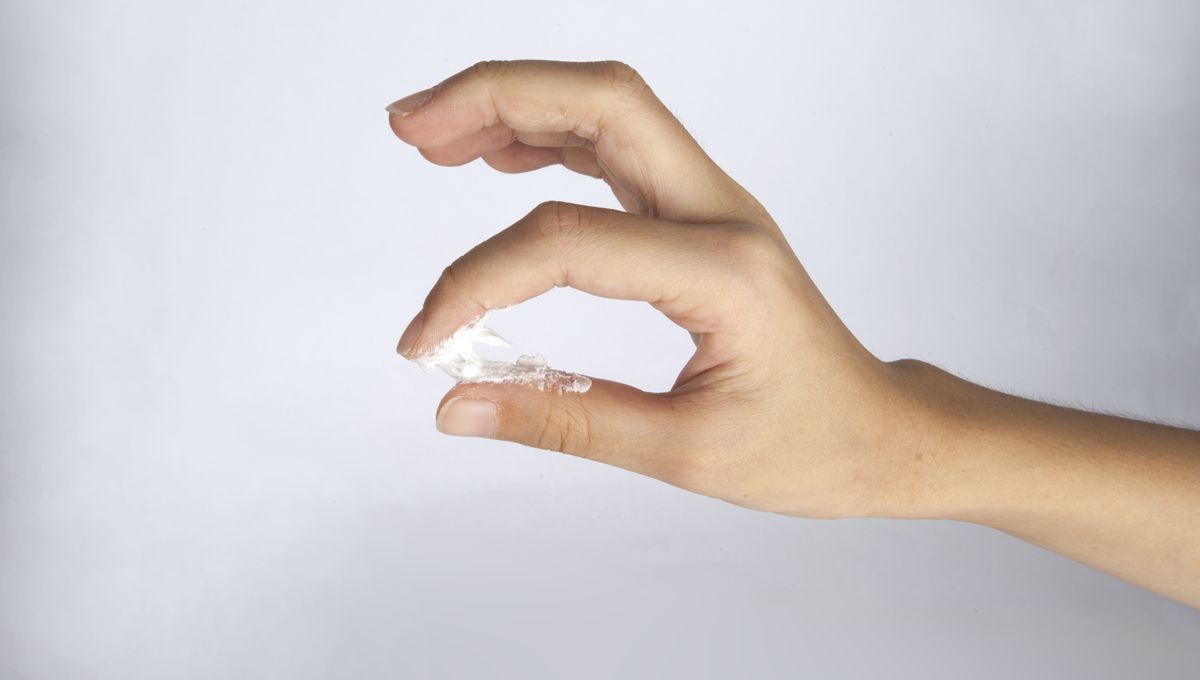
A large proportion of the global population deals with vaginal discharge most days. However, there is a lack of school education about the matter, which leads to misconceptions about what is classed as healthy or unhealthy.
Firstly, what is vaginal discharge?
Essentially, it is a fluid that is needed to keep the vagina clean, moist, and to protect it from infections.
“Vaginal discharge is made up of mucoid endocervical secretions with sloughing epithelial cells and the normal vaginal flora. It is generally the equivalent of 1-4 milliliters in a 24-hour period for women of reproductive age and it has a pH of between 4-4.5,” Dr Angela Brown, an expert in women’s health, told IFLScience.
It is a substance that also decreases during pre-pubescence and in post-menopausal people. Post-menopausal people experience reduced amounts due to lower levels of estrogen – a sex hormone that is involved in many functions like puberty, the menstrual cycle, fertility, and pregnancy.
What is “normal” vaginal discharge?
“Some vaginal discharge is normal and can vary in consistency and volume with the hormonal changes that occur with the menstrual cycle. Watery, stringy, egg-white mucous is normally associated with ovulation and has been used to predict ovulation in couples trying to conceive,” gynaecologist Dr Gino Pecoraro told IFLScience.
The stretchy consistency is related to an increased estrogen level, and helps the sperm pass through to the egg.
“At other times in the menstrual cycle, the discharge will appear sticky and can be white or even yellowish or creamy and even wet and watery. These changes are associated with the hormonal changes in the woman’s body,” says Dr Brown.
When should you be concerned with vaginal discharge?
“Concerning features in vaginal discharge include offensive smell, a sudden significant increase in volume or change in character to thick, bloodstained, frothy, or cottage cheese-like consistency. If the discharge is irritating or causing itching, it can also be a sign of infection and warrants review,” Dr Pecoraro told IFLScience.
There are a few treatable conditions that someone could get that can result in abnormal vaginal discharge:
- Vaginal candidiasis (thrush): A common condition that is caused by a type of yeast that typically lives in the body and can cause an infection if there is out-of-control growth. It produces a thick white cottage cheese discharge along with itching, pain during sex, and discomfort when urinating.
- Bacterial vaginosis (BV): A common condition that occurs when there is too much of certain bacteria in the vagina. It can produce a copious cream, grey, or green-colored discharge that is often associated with a strong fishy smell.
- Trichomoniasis: A common sexually transmitted disease that is caused by infection with a protozoan parasite. It can produce a yellowy-greenish vaginal discharge that is frothy in appearance.
And what should you not do?
“The most unusual thing I’ve heard from a patient was the insertion of fairy floss [cotton candy] into the vagina to make cunnilingus more appealing to a partner. I can’t recommend this as any foreign material, especially something high in sugar, can stimulate bacterial growth and upset the balance of normal bacteria that live in the vagina,” Dr Pecoraro told us.
The content of this article is not intended to be a substitute for professional medical advice, diagnosis, or treatment. Always seek the advice of qualified health providers with questions you may have regarding medical conditions.
All “explainer” articles are confirmed by fact checkers to be correct at time of publishing. Text, images, and links may be edited, removed, or added to at a later date to keep information current.
Source Link: Vaginal Discharge: What Is This Weird Substance That Comes Out My Bits?